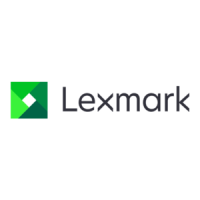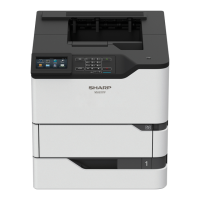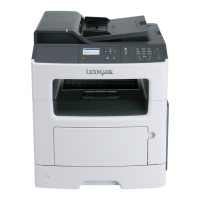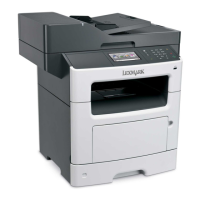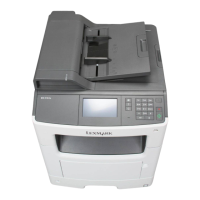Notes:
• Do not load postcards, photos, small items, transparencies,
photo paper, or thin media (such as magazine clippings) into
the ADF tray. Place these items on the scanner glass.
• The ADF indicator light comes on when the paper is loaded
properly.
2 If you are loading a document into the ADF tray, then adjust the
paper guides.
3 From the home screen, navigate to:
FTP > FTP >
> type the name of the recipient > Search
4 Touch the name of the recipient.
Note: To search for additional recipients, touch New Search, and
then type the name of the next recipient.
5 Touch > Send It.
Scanning to a computer or flash drive
Scanning to a computer using the Embedded
Web Server
1 Open a Web browser, and then type the printer IP address in the
address field.
Notes:
• View the printer IP address on the printer home screen. The
IP address appears as four sets of numbers separated by
periods, such as 123.123.123.123.
• If you are using a proxy server, then temporarily disable it to
load the Web page correctly.
2 Click Scan Profile > Create Scan Profile.
3 Select your scan settings, and then click Next.
4 Select a location on your computer where you want to save the
scan image.
5 Type a scan name, and then a user name.
Note: The scan name is the name that appears in the Scan
Profile list on the display.
6 Click Submit.
Note: Clicking Submit automatically assigns a shortcut number.
You can use this shortcut number when you are ready to scan
your documents.
7 Review the instructions on the Scan Profile screen.
a Load an original document faceup, short edge first into the ADF
tray or facedown on the scanner glass.
Notes:
• Do not load postcards, photos, small items,
transparencies, photo paper, or thin media (such as
magazine clippings) into the ADF tray. Place these items
on the scanner glass.
• The ADF indicator light comes on when the paper is
loaded properly.
b If you are loading a document into the ADF tray, then adjust the
paper guides.
c Do either of the following:
• Press #, and then enter the shortcut number using the
keypad.
• From the home screen, navigate to:
Held Jobs > Profiles > select your shortcut on the list
Note: The scanner scans and sends the document to the
directory you specified.
8 View the file from the computer.
Note: The output file is saved in the location or launched in the
program you specified.
Setting up Scan to Computer
Notes:
• This feature is supported only in Windows Vista or later.
• Make sure your computer and printer are connected to the
same network.
1 Open the printers folder, and then select your printer.
Note: If your printer is not in the list, then add your printer.
2 Open the printer properties, and then adjust the settings as
necessary.
3 From the control panel, touch Scan to Computer > select the
appropriate scan setting > Send It.
Scanning to a flash drive
1 Load an original document faceup, short edge first into the ADF
tray or facedown on the scanner glass.
Notes:
• Do not load postcards, photos, small items, transparencies,
photo paper, or thin media (such as magazine clippings) into
the ADF tray. Place these items on the scanner glass.
• The ADF indicator light comes on when the paper is loaded
properly.
2 If you are loading a document into the ADF tray, then adjust the
paper guides.
3 Insert the flash drive into the USB port on the front of the printer.
Note: The USB Drive home screen appears.
4 Select the destination folder, and then touch Scan to USB drive.
Note: The printer goes back to the home screen after 30
seconds of inactivity.
5 Adjust the scan settings, and then touch Scan It.
Clearing jams
[x]‑page jam, lift front cover to remove
cartridge. [200–201]
CAUTION—HOT SURFACE: The inside of the printer might be
hot. To reduce the risk of injury from a hot component, allow
the surface to cool before touching.
19
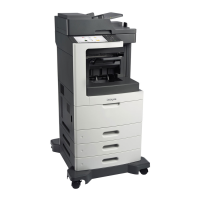
